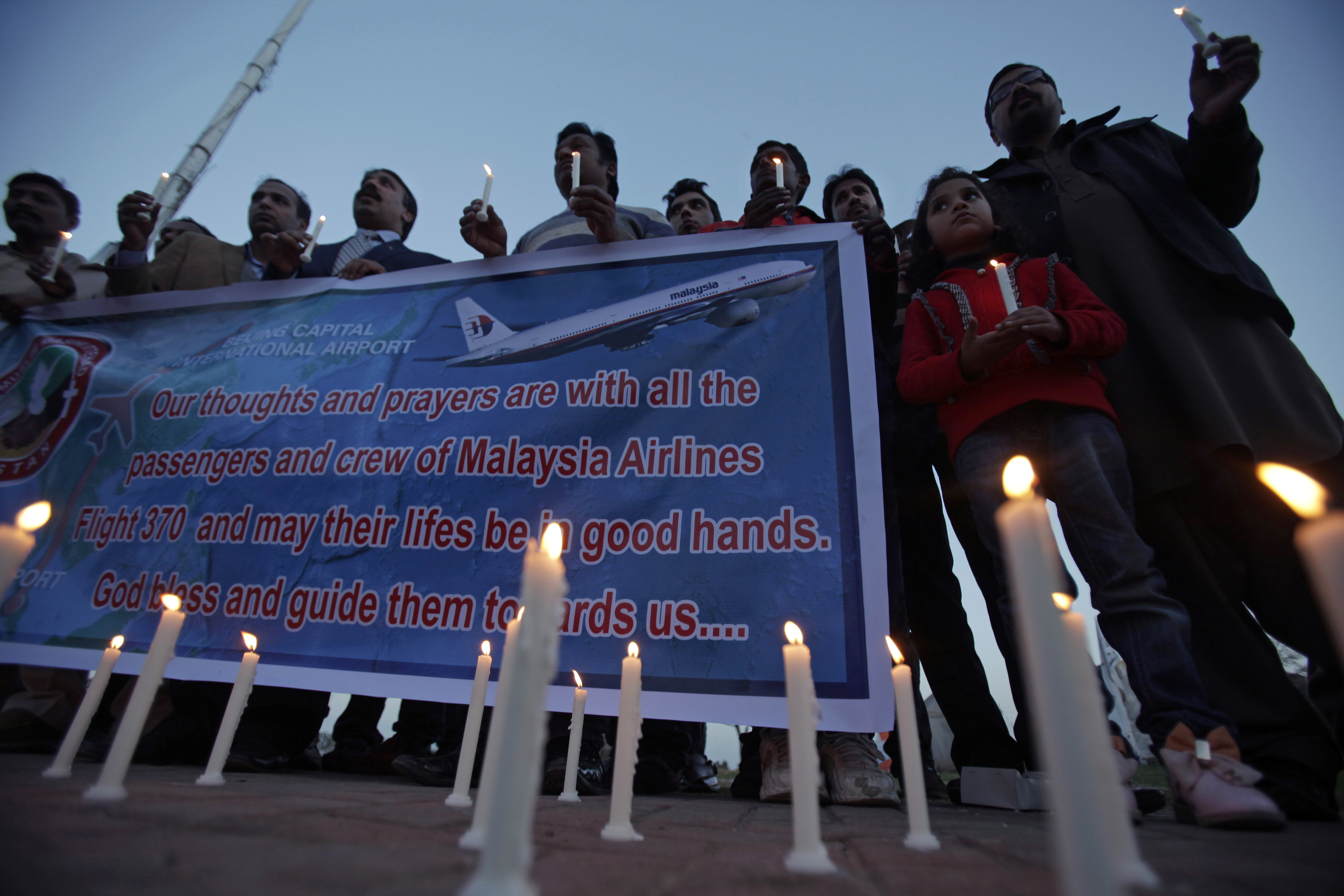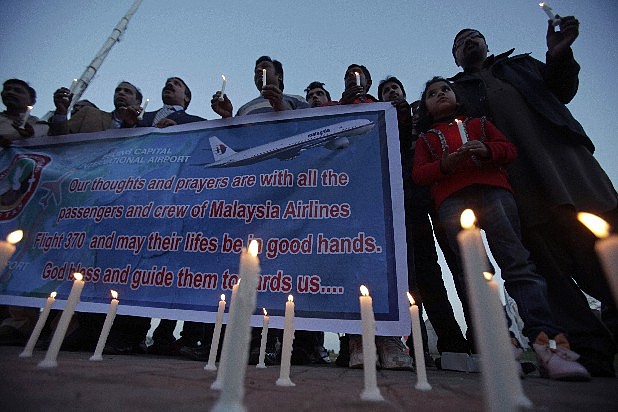WELLINGTON, New Zealand- The plane must be somewhere. But the same can be said for Amelia Earhart's.
Ten days after Malaysia Airlines Flight 370 disappeared with 239 people aboard, an exhaustive international search has produced no sign of the Boeing 777, raising an unsettling question: What if the airplane is never found?
Such an outcome, while considered unlikely by many experts, would certainly torment the families of those missing. It would also flummox the airline industry, which will struggle to learn lessons from the incident if it doesn't know what happened.
While rare nowadays, history is not short of such mysteries -- from the most famous of all, American aviator Earhart, to planes and ships disappearing in the so-called Bermuda Triangle.
"When something like this happens that confounds us, we're offended by it, and we're scared by it," said Ric Gillespie, a former U.S. aviation accident investigator who wrote a book about Earhart's still-unsolved 1937 disappearance over the Pacific Ocean. "We had the illusion of control and it's just been shown to us that oh, folks, you know what? A really big airliner can just vanish. And nobody wants to hear that."
Part of the problem, said Andrew Thomas, the editor-in-chief of the Journal of Transportation Security, is that airline systems are not as sophisticated as many people might think. A case in point, he said, is that airports and airplanes around the world use antiquated radar tracking technology, first developed in the 1950s, rather than modern GPS systems.
A GPS system might not have solved the mystery of Flight 370, which disappeared March 8 while flying from Kuala Lumpur, Malaysia, to Beijing. But it would probably have given searchers a better read on the plane's last known location, Thomas said.
"There are lots of reasons why they haven't changed, but the major one is cost," he said. "The next-generation technology would cost $70 to $80 billion in the U.S."
Experts say the plane's disappearance will likely put pressure on airlines and governments to improve the way they monitor planes, including handoff procedures between countries. Flight 370 vanished after it signed off with Malaysian air-traffic controllers, and never made contact with their Vietnamese counterparts as it should have.
And if the plane is never found, liability issues will be a huge headache for courts. With no wreckage, it would be difficult to determine whether the airline, manufacturers or other parties should bear the brunt of responsibility.
"The international aviation legal system does not anticipate the complete disappearance of an aircraft," said Brian Havel, a law professor and director of the International Aviation Law Institute at DePaul University in Chicago. "We just don't have the tools for that at present."
 Members of a social group, the Christian Muslim Alliance Pakistan, hold a candlelight vigil for passengers aboard a missing Malaysia Airlines plane Tuesday in Islamabad, Pakistan. The search for Malaysian Flight 370, which vanished early March 8 while flying from Kuala Lumpur to Beijing with 239 people on board, has now been expanded deep into the northern and southern hemispheres.
Members of a social group, the Christian Muslim Alliance Pakistan, hold a candlelight vigil for passengers aboard a missing Malaysia Airlines plane Tuesday in Islamabad, Pakistan. The search for Malaysian Flight 370, which vanished early March 8 while flying from Kuala Lumpur to Beijing with 239 people on board, has now been expanded deep into the northern and southern hemispheres.The families of the missing, of course, would face the most painful consequences of a failed search.
"In any kind of death, the most important matter for relatives and loved ones is knowing the context and circumstances," said Kevin Tso, the chief executive of New Zealand agency Victim Support, which has been counseling family and friends of the two New Zealand passengers aboard the flight. "When there's very little information, it's very difficult."
Tso said the abundance of speculation about the plane's fate in the media and elsewhere is not helpful to the families, who may be getting false hope that their loved ones are still alive.
It has been nearly 50 years since a plane carrying more than two dozen people vanished without a trace, according to a list of unexplained aviation disappearances tracked by the Flight Safety Foundation. An Argentine military plane carrying 69 people disappeared in 1965 and has never been found.
Earhart, the first female pilot to cross the Atlantic Ocean, vanished over the Pacific with Fred Noonan during an attempt to circumnavigate the globe. Seven decades later, people are still transfixed. Theories range from her simply running out of fuel and crashing to her staging her own disappearance and secretly returning to the U.S. to live under another identity.
There is also an ongoing fascination with the Bermuda Triangle, where several ships and planes disappeared, including a squadron of five torpedo bombers in 1945. Studies have indicated the area is no more dangerous than any other stretch of ocean.
More than two dozen countries are involved in the effort to find Flight 370 and end the uncertainty, with dozens of aircraft and boats searching along a vast arc where investigators believe the plane ended up, judging by signals received by a satellite.
Gillespie and other experts said they expect the plane will eventually be found, even if investigators have to wait until some wreckage washes ashore.
"We all expect we're going to find this plane and the chances are probably pretty good that we'll find something. But you know, I think everyone thought that about Amelia Earhart as well," said Phaedra Hise, a pilot and author of "Pilot Error: The Anatomy of a Plane Crash." ''We know there's a chance that we may never find out what happened. Which is a little scary, isn't it?"
